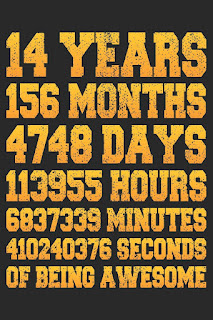WebGL Camp - Pushing forward the 3D Web
Earlier this month was the second WebGL Camp in Silicon Valley. Organized by Henrik Bennetsen (CEO of Katalabs) and Christian Greuel (Manager of SRI Geovisualization Center), the camp is a developer focused event that aims to bring together the people who are writing the WebGL spec with those who build projects on it for some show and tell.
 WebGL is based on OpenGL ES 2.0 and provides a programmatic interface for 3D graphics. It provides a 3D graphics API implemented in a web browser without the use of plug-ins. It uses the HTML5 canvas element and is accessed using Document Object Model interfaces. The specification is currently a work in progress and is managed by the non-profit Khronos Group.
WebGL is based on OpenGL ES 2.0 and provides a programmatic interface for 3D graphics. It provides a 3D graphics API implemented in a web browser without the use of plug-ins. It uses the HTML5 canvas element and is accessed using Document Object Model interfaces. The specification is currently a work in progress and is managed by the non-profit Khronos Group.
 WebGL is based on OpenGL ES 2.0 and provides a programmatic interface for 3D graphics. It provides a 3D graphics API implemented in a web browser without the use of plug-ins. It uses the HTML5 canvas element and is accessed using Document Object Model interfaces. The specification is currently a work in progress and is managed by the non-profit Khronos Group.
WebGL is based on OpenGL ES 2.0 and provides a programmatic interface for 3D graphics. It provides a 3D graphics API implemented in a web browser without the use of plug-ins. It uses the HTML5 canvas element and is accessed using Document Object Model interfaces. The specification is currently a work in progress and is managed by the non-profit Khronos Group.The event was a who's who from the WebGL community. The presentation list:
- Gavriel State and Daniel Koch from TransGaming provided a high level introduction to the ANGLE Project. ANGLE provides OpenGL ES 2.0 compatible API's on top of Microsoft's Direct3D. Presentation video
- Johannes Behr from Fraunhofer IGD presented on the X3Dom project. The project explores an integration of declarative (X)3D in HTML with WebGL. Presentation video
- Jim Sangwine, lead developer at Philips in the Netherlands, presented on JigLibJS. The JigLibJS project, with the support of NLNet, aims to stress test the latest engines and to stimulate the development of exciting new WebGL content by porting the JigLib rigid body physics engine written by Danny Chapman to JavaScript. Presentation video
- Chief Strategist of Education & Workforce Development for the US Department of Energy Michelle Fox and SRI International's John Pywtorak demonstrated real world applications and browser based authoring tools developed using O3D/WebGL. Presentation video
- Primary developer of SceneJS Lindsay Kay presented on this JavaScript framework which provides a flexible JSON-based API for defining, querying, and manipulating 3D scenes on WebGL. Presentation video
- Vangelis Kokkevis from Google presented Google's Body Browser application built using WebGL. Presentation video
- Khronos' COLLADA Working Group Chairman Mark Barnes talk focused on the importance of open standard content formats and conformance of implementations with regard to the Web. Presentation video
- President of Katalabs Daniel Miller presented on OurBricks. A website in development at Katalabs where 3D content can be uploaded and viewed using WebGL. Presentation video
- Google's Gregg Tavares shares his work and development challenges about the Chromium WebGL demos. Presentation video
- Digital Space Corp. CEO Bruce Damer (author of Avatars!) gave a tour of the origins of 3D on computers, and its growth on the web. He also gave a glimpse of a WebGL interface to the EvoGrid project, a project to provide grid simulation power to explore questions around the origin of life on Earth. Presentation video
- Stanford C.S. Ph.D. Candidate Ewen Cheslack-Postava presented on KataSpace, a shared, interactive, 3D environment that users can access directly from their browser using WebGL, WebSockets, and WebWorkers. Presentation video
- Google Software Engineer Kenneth Russell presented an update on WebGL in Chrome. Presentation video
WebGL camp is an open event available to anyone that wants to hold one. I expect to see more camps this next year as WebGL continues to grow and be implemented in all the browsers. Great job Henrik and Christian, see you next year.
The video below highlights some parts of the camp.


Comments